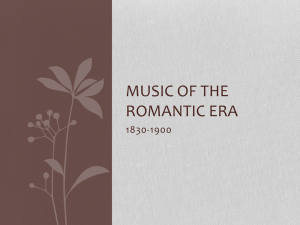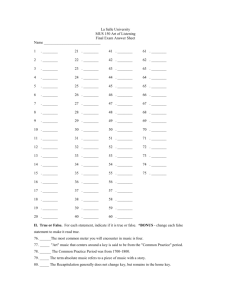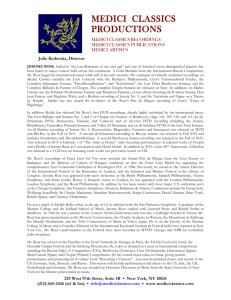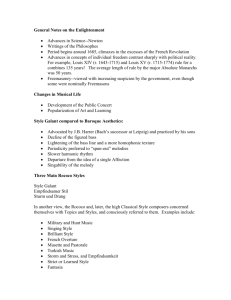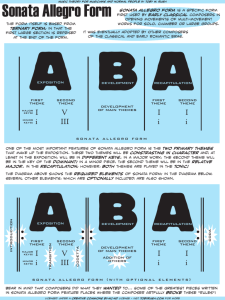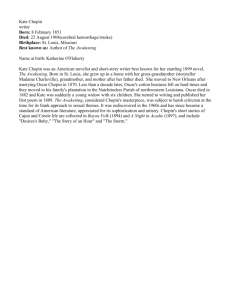Choral Union Concert Series
advertisement
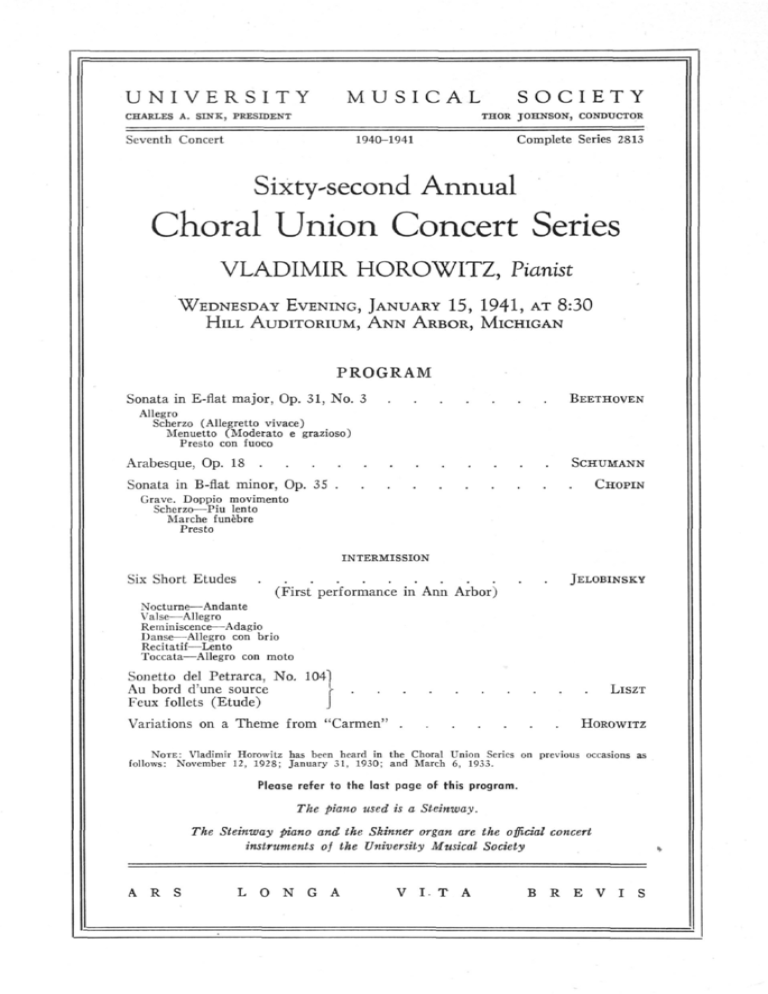
UNIVERSITY MUSICAL CHARLES A. SINK, PRESIDENT SOCIETY THOR JOHNSON, Seventh Concert 1940-1941 CONDUCTOR Complete Series 2813 Sixty-second Annual Choral Union Concert Series VLADIMIR HOROWITZ, Pianist WEDNESDAY EVENING, JANUARY 15, 1941, AT 8:30 HILL AUDITORIUM, A N N ARBOR, MICHIGAN PROGRAM Sonata in E-flat major, Op. 31, No. 3 BEETHOVEN Allegro Scherzo (Allegretto vivace) Menuetto (Moderato e grazioso) Presto con fuoco Arabesque, Op. 18 SCHUMANN Sonata in B-flat minor, Op. 35 CHOPIN Grave. Doppio movimento Scherzo—Piu lento Marche funebre Presto INTERMISSION Six Short Etudes JELOBINSKY (First performance in Ann Arbor) Nocturne—Andante Valse—Allegro Reminiscence—Adagio Danse—Allegro con brio Recitatif—Lento Toccata—Allegro con moto Sonetto del Petrarca, No. 104] Au bord d'une source f Feux follets (Etude) J LISZT Variations on a Theme from "Carmen" HOROWITZ NOTE: Vladimir Horowitz has been heard in the Choral Union Series on previous occasions as follows: November 12, 1928; January 31, 1930; and March 6, 1933. Please refer to the last page of this program. The piano used is a Steinway. The Steinway piano and the Skinner organ are the official concert instruments of the University Musical Society A R S L O N G A V I T A B R E V I S PROGRAM NOTES Sonata in E-flat major, Op. 31, No. 3 BEETHOVEN Allegro Scherzo (Allegretto vivace) Menuetto (Moderato e grazioso) Presto con fuoco Beethoven completed the three sonatas, Op. 31, in 1802, the year of the melancholy "Heiligenstadt Will" and also of the exuberant Second Symphony. The E-fiat is Beethoven's last full-length, four-movement piano sonata until the "Hammerklavier," years later. The absence of a slow movement is as typical of the mood and nature of the work as it was again to be in the case of the Eighth Symphony. Such a movement is here supplanted by a minuet (moderato e grazioso) of caressingly tender and songful character. Its trio is marked by leaps from the lower to the higher octave (Saint-Saens utilized the theme as the subject of his variations for two pianos). Apart from this movement and the reflective, questioning motive which opens the sonata without clearly and unequivocally establishing the feeling for its key, the work is almost unceasingly animated, excited, or effervescent. In certain respects the most original page is the scherzo, with its sturdy, marchlike theme in 2-4 time and its restless play of weighty staccati, the effect of which Beethoven was learning greatly to value at this stage of his development. Cross accents on offbeats intensify the almost irascible vigor of the movement, and Bekker's designation "staccato bacchanale" conveys something of its distinctive character. The finale, on the other hand, betrays kinship with the tarantella (a "German tarantella" it has been called). A phrase of six notes over flying triplets leads it off and is followed by a subject resembling a hunting call— whence the title "Jagd Sonate," still applied in certain quarters to the work. The close is vertiginous. Arabesque, Op. 18 SCHUMANN This piece was composed in 1839. It is dedicated to Schumann's friend, the wife of one Major F. Serre, who lived in the neighborhood of Dresden. The work consists of a recurrent main section, two contrasting ones in minor (somewhat slower in pace), and a coda. The principal section is spun out of a forward-pressing and light-footed romantic melody, its first motive marked with a grace note. Sonata in B-flat minor, Op. 35 CHOPIN Grave. Doppio movimento Scherzo—Piu lento Marche funebre Presto The Sonata in B-flat minor was published in May, 1840, but must have been concluded during the second half of the preceding year, for during this period Chopin had played it to Moscheles. It was far from meeting with universal acceptance. Some of the reproaches it incurred came from rather unexpected quarters and were grounded not infrequently on academic dogmas and prejudices which have persisted almost down to our own day. And this though Chopin wrote few things that have taken a stronger hold on the imaginative sympathies of people! Yet for upward of three quarters of a century the enormously viable work, like its companion in B minor, Op. 58, has been soundly berated by the schoolmen and other learned Thebans for not properly fulfilling the conventional specifications of a sonata. Even the usually sympathetic and clairvoyant Schumann could bring himself to say that Chopin had here "bound together four of his maddest children and called the result a sonata," while the devoted Liszt regretted that Chopin's sonatas disclosed "plus de volonte que d'inspiration." Other and lesser men have spilled oceans of ink and split millions of hairs over the "problem" of its "form." Probably the best answer was given by James Huneker, all told the soundest and most sensible arbiter in questions touching Chopin: "Let us confess, there is a great amount of hypocrisy and cant in this matter. If Scarlatti wrote 'sonatas' what is the 'Appassionata'? If the A flat major of Weber is a sonata can the F minor Brahms be called one? Is the Haydn form orthodox and the Schumann heterodox? Chopin wrote only one really 'classical' sonata and that is an early work (in C minor, op. 4). It was praised by the Vienna critics because it was not so 'revolutionary' as the Variations, op. 2." Six Short Etudes JELOBINSKY Jelobinsky is a modern Soviet composer who studied at Leningrad Conservatory with Scherbachev. At the age of twenty, he wrote a historical revolutionary opera, "Komarinskii Muzhik," which was produced in Leningrad on October 10, 1933. His next opera, "Her Saint's Day," was produced in Leningrad, February 22, 1935. He has also written a symphony, 24 preludes for piano, and a number of songs. His latest work, the opera "Mother," based on Gorky's famous book, was reviewed at length in Sovetskaya muzika and described as "the first attempt to depict the struggle of the Russian proletariat against monarchy in operatic form." Sonetto del Petrarca, No. 104] Au bord d'une source V LISZT Feux follets (Etude) J The three volumes of compositions known by the collective title "Annees de Pelerinage" grew out of a series of early pieces called "Album d'un Voyageur." They went through numerous stages of revision and expansion and did not receive their final form till 1852, though the third volume appeared only after Liszt's death. The subjects for the first "Year of Pilgrimage" the composer derived from his wanderings in Switzerland, for the second from his sojourns in Italy. The Italian series, begun at Bellagio in 1837 (where Liszt had gone in company with Marie d'Agoult and where his daughter Cosima was born) did not appear till 1848. It contained seven pieces, three of them based on sonnets of Petrarch. These, however, had been originally conceived as songs, like the more familiar "Liebestraume." Though he composed them in Rome in 1839, Liszt did not transform them into their present pianistic shape till nine years later. The Sonnet No. 104 in E major is the most popular of the three. It opens with a short dramatic introduction which leads to an extended lyrical melody. "Au bord d'une source" ("At the Spring"), the fourth and one of the most familiar of the Swiss series, is gently illustrative music—a purling melody against a murmuring background. The "Etudes d'Execution Transcendante" grew out of a rather primitive set of piano etudes which Liszt composed at the age of sixteen after his studies with Czerny. The final edition was published in 1854. They formed an epitome of all Liszt's technical innovations up to that time. For long the composer was the only one who could play them. James Huneker declared they call for "fingers of steel, a brain on fire and a heart bubbling with chivalric force." The "Feux Follets," a study in deftness, lightness, and speed (with exceptional problems for the fourth and fifth fingers) is the fifth of the series. Variations on a Theme from "Carmen" HOROWITZ These variations were written in 1923, but Mr. Horowitz revised and expanded them about three years ago, besides making subsequent alterations in the coda. The theme treated is the melody to which Carmen, at the beginning of the second act of Bizet's opera, sings the words "Les tringles des sistres tintaient," and its ensuing refrain. The composition is a virtuoso study, utilizing certain of the newest developments of piano technic as well as harmonies and effects considerably tarter than anything to be found in the operatic original. FIRST ANNUAL CHAMBER MUSIC FESTIVAL The University Musical Society announces the inauguration of a CHAMBER MUSIC FESTIVAL of three concerts which will be given by the MUSICAL ART QUARTET OF NEW YORK This distinguished String Quartet is made up of four prominent musicians, each of whom in his own right has won signal success both as solo virtuoso and as ensemble player. SASCHA JACOBSEN, First Violinist, is a serious artist, a fine technician, and a brilliant interpreter. He belongs to the mighty line of Auer. PAUL BERNARD, Second Violinist, is another Auer product. He made his New York debut as a virtuoso in 1922, and has since had a brilliant career. WILLIAM HYMANSON, Violist, was concertmaster of the National Orchestra Association for two years. MARIE ROEMAET-ROSANOFF, Violoncellist, holds a high place before the public both in America and in Europe. THREE CONCERTS will be given as follows: FRIDAY, JANUARY 24, 8:30 PROGRAM Quartet in G major (K. 387) Tryptique Quartet in C minor, Op. 51, No. 1 Mozart Tansman Brahms SATURDAY, JANUARY 25, 2:30 PROGRAM Quartet in G major, Op. 64, No. 4 Sighf Haydn } Bloch Quartet in D major Borodin SATURDAY, JANUARY 25, 8:30 PROGRAM Quartet in D minor (Op. post.) La oracion del torero Quartet in F Schubert Turina Ravel , THE FESTIVAL will take place in the Main Lecture Hall of the RACKHAM BUILDING. Tickets are now on sale at the offices of the University Musical Society in Burton Memorial Tower as follows: Season Tickets (three concerts) $2.00; Single Concerts $1.00. Choral Union Concerts HILL AUDITORIUM 8:30 MINNEAPOLIS SYMPHONY ORCHESTRA DIMITRI MITROPOULOS, Conductor BUDAPEST STRING QUARTET P.M. Tuesday, January 28 Thursday, February 20 JOSEF ROISMANN, First ALEXANDER SCHNEIDER, Violin BORIS KROYT, Viola Second Violin MISCHA SCHNEIDER, Violoncello NATHAN MILSTEIN, Violinist Tuesday, March 4 (Mr. Milstein takes the place of Mr. Enesco, who is unable to come to America on account of the war.) NOTICES: The right is reserved to make such changes in the dates and artists announced as necessity may require. While wide and prompt publicity is given to dates thus changed, to avoid inconvenience it is suggested that, so far as possible, out-of-town guests confirm the dates in advance.
